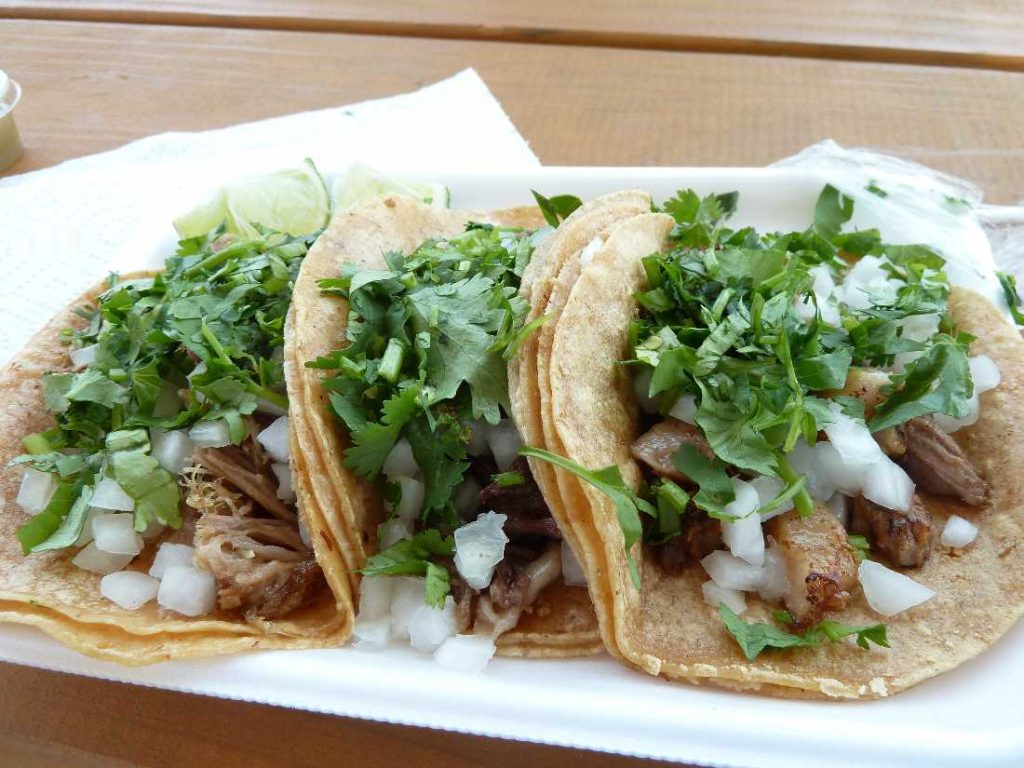Blog
From Street to Gourmet: The Evolution of Tacos
Tacos, a beloved dish with humble origins, have undergone a fascinating transformation over the years—from a simple street food in Mexico to a gourmet delicacy enjoyed worldwide. The journey of the taco is a tale of cultural fusion, culinary innovation, and an enduring love for bold flavors. In this article, we will explore the rich history of tacos, trace their evolution from street food to gourmet cuisine, and highlight the factors that have shaped this iconic dish into what it is today.
The Origins of Tacos: A Humble Beginning
The taco, in its most basic form, has been a part of Mexican cuisine for centuries. It is believed that the concept of placing food in a tortilla dates back to the Aztec civilization. In fact, tortillas were used by the Aztecs and other indigenous peoples of Mexico to hold fillings such as beans, chili, and meats. These early versions of tacos were simple, practical, and designed to be eaten with minimal utensils—perfect for a nomadic lifestyle.
The word “taco” itself is thought to derive from the Spanish verb “tacar,” which means “to plug” or “to seal.” This refers to the action of folding a tortilla around various fillings. The modern taco, however, began to take shape in the late 19th and early 20th centuries, particularly in northern Mexico, where street vendors began selling tacos filled with meats like beef, pork, and lamb, topped with fresh onions, cilantro, and salsas.

Tacos as Street Food: The Birth of the Street Taco Culture
Tacos are inseparable from the vibrant street food culture of Mexico. In the early 20th century, taco stands, or “taquerías,” began popping up on street corners in Mexico, serving tacos to workers, farmers, and travelers. These roadside taco vendors played a pivotal role in the taco’s development into a widely accessible food. Tacos were affordable, portable, and satisfying, making them the perfect meal for people on the go.
During this time, tacos took on various regional forms. For example, in Mexico City, the “taco al pastor” emerged—a taco featuring pork marinated in a blend of spices and cooked on a vertical rotisserie, similar to shawarma. In northern Mexico, tacos de carne asada, made with grilled beef, became a staple. As taco vendors began experimenting with different meats, fillings, and toppings, tacos gained widespread popularity throughout Mexico.
The taco culture continued to thrive in the streets of Mexico, and it didn’t take long for this beloved dish to make its way to the United States, particularly to cities like Los Angeles and San Diego, where Mexican immigrants brought their taco traditions with them. In the U.S., tacos became part of the broader Tex-Mex food scene, further cementing their place in the American culinary landscape.
The Rise of Tex-Mex and Fast Food Tacos
By the mid-20th century, the taco had firmly embedded itself in American food culture. The rise of Tex-Mex cuisine, which blends Mexican and American culinary traditions, introduced new variations of tacos to the mainstream. The crunchy taco shell, made of corn or flour tortillas that are fried into a crisp shape, became popularized by fast food chains like Taco Bell, which opened in 1962. Taco Bell was instrumental in introducing tacos to the masses across the U.S., making them a quick and affordable meal option for millions.
While the fast food taco made it easier for people to enjoy tacos at home, the quality of the food was often compromised. Mass-produced taco shells, pre-packaged fillings, and bland salsas became synonymous with Americanized tacos. Though these tacos were convenient, they did little to preserve the authenticity and tradition of the Mexican taco. This marked a turning point in the evolution of tacos, as a new wave of food enthusiasts began to demand better quality, more diverse, and more authentic taco experiences.
The Gourmet Taco Revolution
In the early 2000s, a taco revolution began to take place. Fueled by a growing interest in food authenticity, local sourcing, and culinary experimentation, chefs began reimagining tacos and elevating them from street food to gourmet cuisine. This new era of taco innovation saw tacos evolve into a high-end dining experience, with unique fillings, premium ingredients, and creative presentations.
A. The Rise of Fusion Tacos
One of the most significant trends in the gourmet taco movement is the rise of fusion tacos. Chefs began blending traditional taco elements with flavors and ingredients from other cuisines, creating a hybrid that appealed to both adventurous eaters and taco purists. Popular examples of fusion tacos include:
- Korean BBQ Tacos: Combining marinated Korean short ribs with traditional taco toppings like kimchi, cilantro, and sriracha sauce.
- Banh Mi Tacos: A fusion of Vietnamese banh mi sandwiches and tacos, featuring grilled pork, pickled vegetables, and fresh herbs in a soft tortilla.
- Lobster Tacos: Premium seafood tacos that replace traditional meats with tender lobster, often topped with citrusy slaw or avocado.
These fusion tacos are not just creative; they reflect the cultural melting pot of modern cuisine, bringing together different culinary traditions in a single bite.

B. Farm-to-Table and Artisan Tacos
As the farm-to-table movement gained momentum, many chefs began sourcing fresh, local ingredients to create tacos that were not only delicious but also sustainable. Farmers’ markets, organic produce, and sustainably sourced meats became key components in this evolution. By focusing on quality, authenticity, and craftsmanship, gourmet taco restaurants were able to elevate tacos into sophisticated dishes worthy of fine dining.
Artisan tacos, made with hand-crafted tortillas and carefully curated fillings, also became a popular trend. These tacos are often served in small, intimate taco bars or high-end Mexican restaurants that focus on traditional methods while incorporating modern twists. Think of tacos filled with slow-braised short ribs, grilled octopus, or roasted root vegetables, all wrapped in a soft, hand-pressed tortilla.
C. High-End Taco Bars and Taco Tasting Menus
As the taco continued to evolve, taco-centric restaurants began to emerge. These eateries offered high-end versions of the taco, with tasting menus and unique pairings. At places like the famous Taco Maria in Costa Mesa, California, chefs present tacos as a refined culinary experience—offering luxurious fillings like foie gras, truffle oil, and even Wagyu beef.
Such fine-dining taco bars have redefined the taco experience, offering both a sense of nostalgia and innovation, as patrons indulge in upscale, meticulously prepared tacos. Pairing tacos with premium spirits such as tequila, mezcal, and wine adds another layer to the experience.
Tacos as a Global Phenomenon
Today, tacos are no longer confined to Mexico or the U.S. They have become a global phenomenon. From street food stalls in London to gourmet taco restaurants in Tokyo, the taco has taken on various forms and flavors across the globe. In cities like Barcelona, Paris, and Berlin, taco trucks and taco bars are popping up, offering unique regional takes on the dish, incorporating local ingredients and flavors.
In the U.S., taco festivals have become a staple event in cities from New York to Los Angeles, with chefs and food enthusiasts coming together to celebrate this versatile dish. Tacos are no longer just a quick snack; they are now part of the fine-dining landscape, enjoyed by food lovers everywhere.
Conclusion: The Timeless Appeal of Tacos
From their origins as humble street food to their current status as a gourmet delicacy, tacos have truly come a long way. They have adapted to changing tastes, embraced cultural influences, and undergone numerous reinventions, yet they remain one of the most beloved foods worldwide. Whether you’re enjoying a simple taco from a food truck or indulging in a gourmet version with luxurious fillings, the taco’s ability to bring people together and satisfy cravings will always be at its heart.
As the taco continues to evolve, its future seems just as exciting as its past. The journey of the taco is far from over, and with each new creation, it proves that there’s always room for innovation while still honoring tradition. So, whether you prefer the simplicity of a street taco or the creativity of a fusion taco, there’s no denying that the taco’s enduring legacy will continue to delight taste buds for generations to come.


